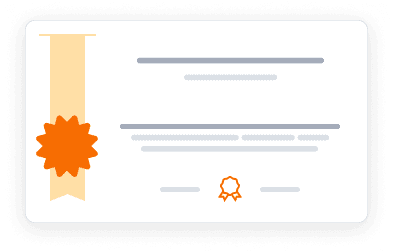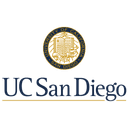Investigate SARS-CoV-2 origins using bioinformatics tools. Learn sequence alignment and phylogenetic analysis to explore various origin hypotheses.
Investigate SARS-CoV-2 origins using bioinformatics tools. Learn sequence alignment and phylogenetic analysis to explore various origin hypotheses.
This course cannot be purchased separately - to access the complete learning experience, graded assignments, and earn certificates, you'll need to enroll in the full Applied Bioinformatics Specialization program. You can audit this specific course for free to explore the content, which includes access to course materials and lectures. This allows you to learn at your own pace without any financial commitment.
Instructors:
English
What you'll learn
Master multiple sequence alignment techniques for viral genome analysis
Apply phylogenetic inference methods to study virus origins
Investigate different hypotheses about SARS-CoV-2 origins
Analyze coronavirus evolution patterns using bioinformatics tools
Skills you'll gain
This course includes:
0.63 Hours PreRecorded video
2 app items
Access on Mobile, Tablet, Desktop
FullTime access
Shareable certificate
Get a Completion Certificate
Share your certificate with prospective employers and your professional network on LinkedIn.
Created by
Provided by

Top companies offer this course to their employees
Top companies provide this course to enhance their employees' skills, ensuring they excel in handling complex projects and drive organizational success.





There are 2 modules in this course
This comprehensive course explores the origins of SARS-CoV-2 using advanced bioinformatics techniques. Students learn multiple sequence alignment and maximum-likelihood phylogenetic inference methods to investigate various hypotheses about COVID-19's emergence. The curriculum covers both the "Artificial Origin Hypothesis" and natural origin theories, including "Direct Zoonotic Transfer" and "Intermediate Host" hypotheses, providing hands-on experience with real genomic data analysis.
Chapter 5: Investigating the Origins of SARS-CoV-2
Module 1 · 2 Hours to complete
Chapter 6: A First Look at the Evolution of Coronaviruses
Module 2 · 4 Hours to complete
Fee Structure
Instructors
Bioinformatics Researcher and Computer Science Educator
Niema Moshiri has transitioned from a Ph.D. student to an Associate Teaching Professor in the Department of Computer Science and Engineering at the University of California, San Diego. His academic journey began with a B.S. in Bioengineering: Bioinformatics, followed by a Ph.D. in Bioinformatics and Systems Biology from UCSD, where he was co-advised by Siavash Mirarab and Pavel Pevzner. His research focuses on computational biology, particularly in phylogenetics and phylogenomics, as well as computational viral epidemiology. As an educator, Moshiri has made significant contributions to computer science education, including co-authoring the interactive online textbook "Data Structures: An Active Learning Approach" and developing Massive Adaptive Interactive Texts (MAITs) for use in flipped classrooms and MOOCs. He is affiliated with the Department of Biomedical Informatics at the UC San Diego School of Medicine and the Halicioglu Data Science Institute. Moshiri's work extends to reviewing for numerous scientific journals and conferences in bioinformatics and computer science education.
Pioneering Bioinformatics Scholar and Computational Biology Innovator
Pavel Arkadevich Pevzner serves as the Ronald R. Taylor Professor of Computer Science at the University of California, San Diego, and director of the NIH Center for Computational Mass Spectrometry, where he has revolutionized the field of computational biology since 2000. After receiving his Ph.D. in mathematics and physics from the Moscow Institute of Physics and Technology, he completed postdoctoral work with Michael Waterman at USC, before establishing himself through positions at Penn State and USC. His groundbreaking research spans bioinformatics algorithms, genome rearrangements, DNA sequencing, and computational proteomics, leading to significant advances in genome assembly and antibiotics discovery. His academic excellence has been recognized through numerous prestigious honors, including the Howard Hughes Medical Institute Professorship (2006), ACM Fellowship (2010), ISCB Fellowship (2012), and the ACM Paris Kanellakis Theory and Practice Award (2018). As an educator, he has transformed bioinformatics education through innovative approaches, including the development of massive open online courses that have reached over half a million students, and authored influential textbooks including "Computational Molecular Biology: An Algorithmic Approach" and "Bioinformatics Algorithms: An Active Learning Approach"
Testimonials
Testimonials and success stories are a testament to the quality of this program and its impact on your career and learning journey. Be the first to help others make an informed decision by sharing your review of the course.
Frequently asked questions
Below are some of the most commonly asked questions about this course. We aim to provide clear and concise answers to help you better understand the course content, structure, and any other relevant information. If you have any additional questions or if your question is not listed here, please don't hesitate to reach out to our support team for further assistance.





